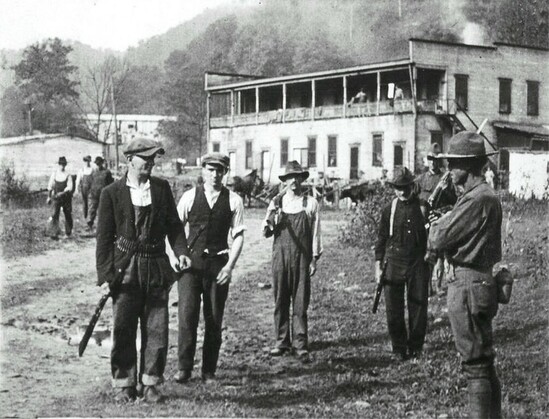MikeDunnAuthor · @MikeDunnAuthor
1850 followers · 3937 posts · Server kolektiva.socialToday in Labor History August 21, 1920: Ongoing violence by coal operators and their paid goons in the southern coalfields of West Virginia led to a three-hour gun battle between striking miners and guards that left six dead. 500 Federal troops were sent in not only to quell the fighting, but to ensure that scabs were able to get to and from the mines. A General Strike was threatened if the troops did not cease their strikebreaking activities. This was just 3 months after the Matewan Massacre, in which the miners drove out the seemingly invincible Baldwin-Felts private police force, with the help of their ally, Sheriff Sid Hatfield. 1 year later, Sheriff Hatfield was gunned down on the steps of the courthouse by surviving members of the Baldwin-Felts Agency. News spread and miners began arming themselves, leading to the Battle of Blair Mountain, the largest armed insurrection since the Civil War and the largest labor uprising in U.S. history. Over 100 people were killed in the 5-day battle, including 3 army soldiers and up to 20 Baldwin-Felts detectives. Nearly 1,000 people were arrested. 1 million rounds were fired. And the government dropped bombs from aircraft on the miners, only the second time in history that the government bombed its own citizens (the first being the pogrom against African American residents of Tulsa, during the so-called Tulsa Riots).
The Battle of Blair Mountain is depicted in Storming Heaven (Denise Giardina, 1987), Blair Mountain (Jonathan Lynn, 2006), and Carla Rising (Topper Sherwood, 2015). And the Matewan Massacre is brilliantly portrayed in John Sayles’s film, “Matewan.”
#WorkingClass #LaborHistory #mining #strike #union #WestVirginia #matewan #BattleOfBlairMountain #uprising #CivilWar #GeneralStrike #tulsa #massacre #racism #books #fiction #film #writer #author #novel @bookstadon
#workingclass #LaborHistory #mining #strike #union #westvirginia #matewan #battleofblairmountain #uprising #civilwar #generalstrike #tulsa #massacre #racism #books #fiction #film #writer #author #novel
